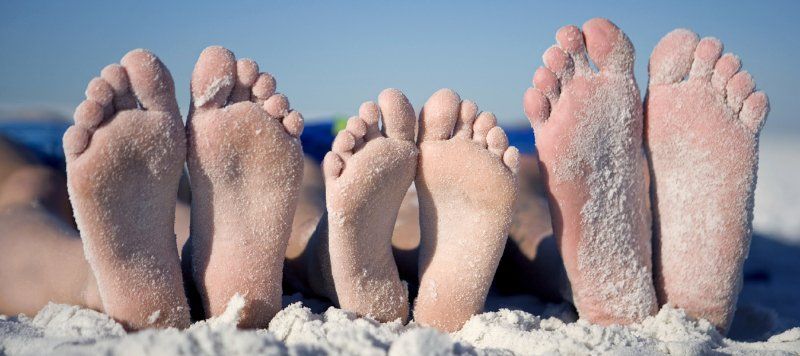Call Now -- Be Seen Today!
714-528-3668
Info@Podiatry.Care
Podiatry Education
Hammertoe Deformity
Hammertoes
are a common podiatry digital deformity where the middle of the
toe bends upward causing foot pain. The hammertoe deformity is
caused by a muscle imbalance in the foot where the muscles in
the leg are trying to stabilize the foot during walking or the
muscle are trying to help with a weak Achilles' Tendon. Once
the hammertoe deformity begins to form, the deformity is progressive
in nature and will eventually become a rigid fixed deformity.
Because the center of the toe is bending upward, the toe commonly
develops a callous on top of the toe that is painful. Also associated
with hammertoe deformities is a callous under the ball of the
foot due do the hammertoe causes the metatarsal head in the ball
of the foot to drop down. The hammertoe deformity can occur to
all toes or only one toe. Usually the second through fifth toes
are involved. Besides hammertoes, there are other related toe
deformities such as a mallet toe deformity where the end joint
in the toe bends down and a claw toe where both toe joints are
bent down and the toe looks curled down.

Treatment Considerations
Treatment
for hammertoes consists of trying to help improve the muscle
balance in the foot by wearing more supportive shoes and a hammertoe
pad. A custom molded foot orthotic may be recommended by a Podiatrist
after examination of your foot to help decrease the amount of
muscle pulling occurring to the end of the toes. The use of certain
pads do help especially a pad called a Buttress Pad that you
can buy at the store or a custom pad can be made for you by a
Podiatrist. When the hammertoes become a constant problem in
trying to use padding around the toes and nothing is working,
surgical straightening of the toe or toes is indicated. There
a few different procedures that are used to correct hammertoe
deformities. The two most common is the Joint Arthroplasty and
Joint Fusion. Joint Arthroplasty is a procedure that removes
the largest part of the middle joint in the toe to allow the
toe to straighten out. A Joint

Fusion
is where the middle joint is fused using various fusion techniques.
An excellent method of fusion is to use an absorbable pin
that is placed in the middle of the toe bones that after the
fusion has taken will be dissolved in about six months. Depending
on the amount of lifting that has resulted in the ball of the
foot from the hammertoe deformity, both an arthroplasty and a
fusion may require the additional procedure of a release of the
joint contracture in the joint at the ball of the foot.
Ultimately, regardless of the method used to correct the hammertoe
deformity, after surgery, the patient should expect a good result
and should not experience any major pain from the toe surgery.
Usually if the second through fifth toes have a hammertoe deformity,
the typical treatment is to fuse the second through forth toes
and to perform a arthroplasty on the fifth toe.
In summery, hammertoe
deformities are very common and are initially treated with supportive
shoes and / or foot orthotics and the use of a Buttress Pad.
Depending on the severity of the pain that is occurring in the
toe and the amount of callous formation at the top of the toe
and under the ball of the foot, surgical intervention may be
required to straighten the toe and resolve the joint contracture
that is occurring at the joint in the ball of the foot.
DISCLAIMER: MATERIAL ON THIS SITE IS BEING PROVIDED FOR EDUCATIONAL AND INFORMATION PURPOSES AND IS NOT MEANT TO REPLACE THE DIAGNOSIS OR CARE PROVIDED BY YOUR OWN MEDICAL PROFESSIONAL. This information should not be used for diagnosing or treating a health problem or disease or prescribing any medication. Visit a health care professional to proceed with any treatment for a health problem.













